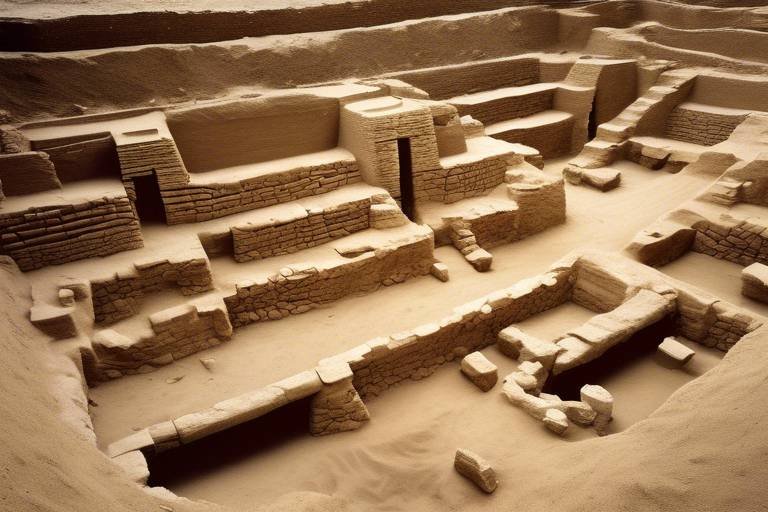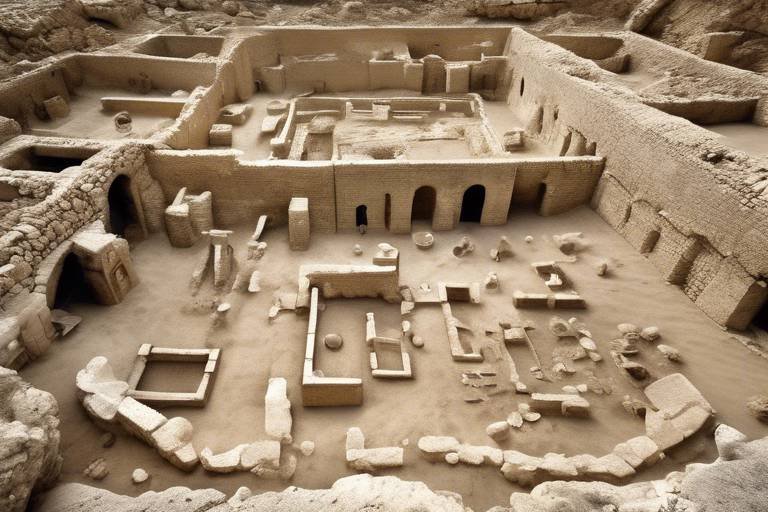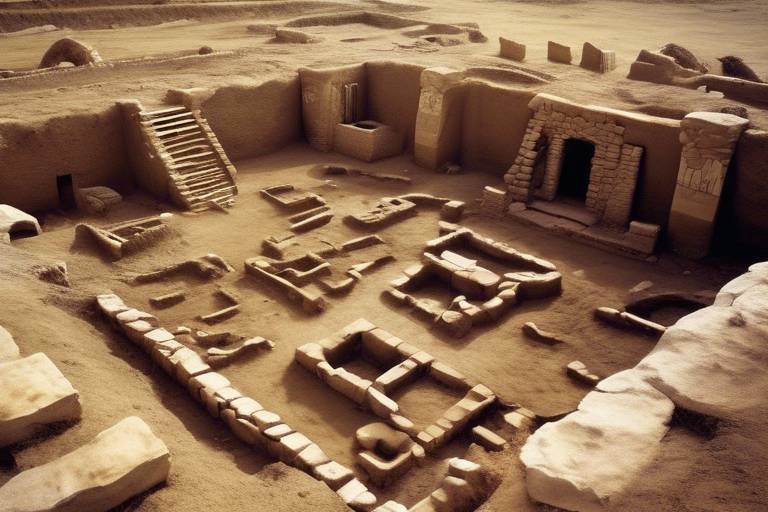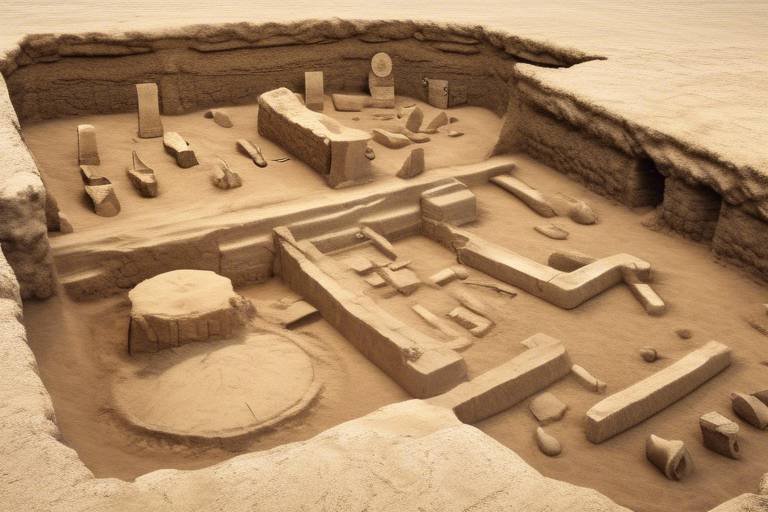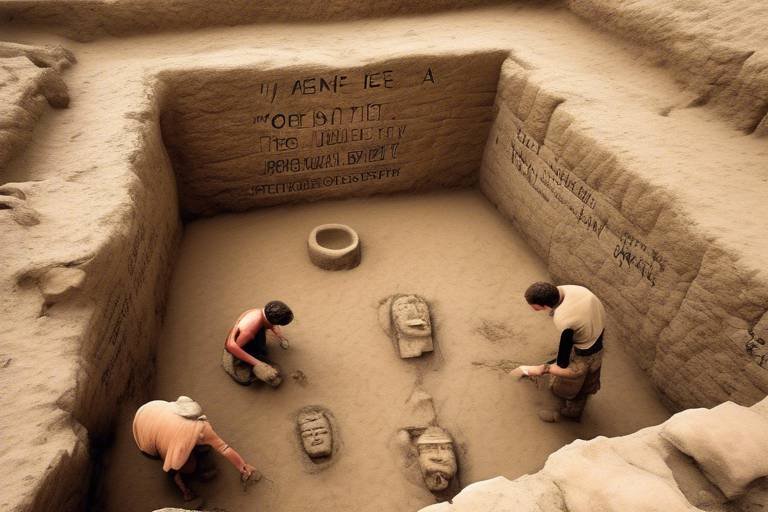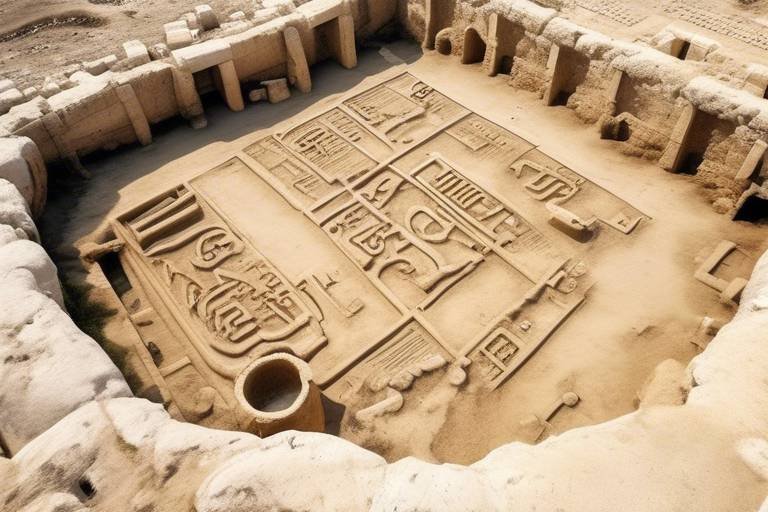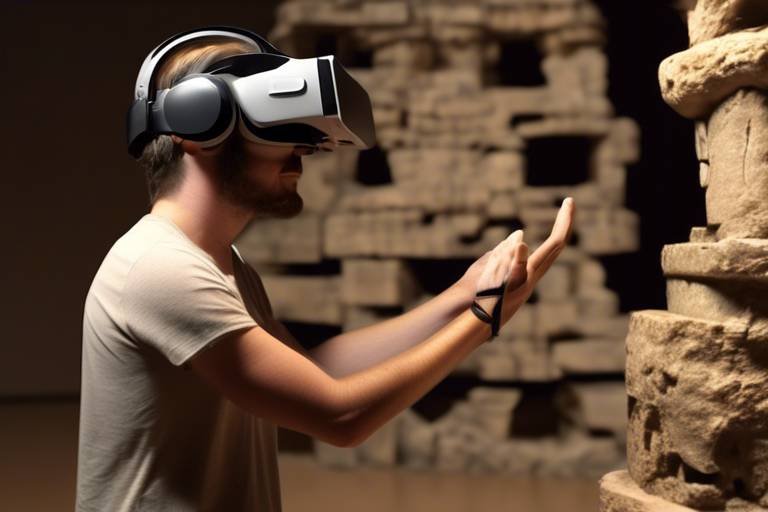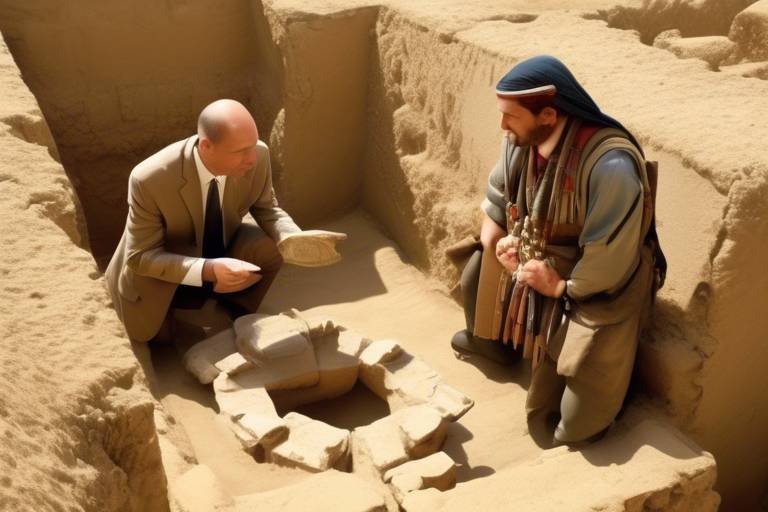Uncovering the Rituals of the Ancient Maya
Uncovering the Rituals of the Ancient Maya takes us on a journey through the mystical world of one of the most enigmatic civilizations in history. The ancient Maya were renowned for their elaborate ceremonial practices and traditions, which played a central role in shaping their society and religious beliefs.
Exploring the fascinating ceremonial practices of the Maya reveals a rich tapestry of rituals that reflected their deep connection to the spiritual realm. From intricate processions to solemn dances, every ceremony was imbued with symbolic meaning and significance, offering a glimpse into the complex worldview of this ancient civilization.
One of the most intriguing aspects of Maya rituals is their religious beliefs, which revolved around a diverse pantheon of gods and intricate creation myths. The Maya believed that their deities controlled every aspect of the natural world, from the cycles of the sun and moon to the abundance of crops, and it was through elaborate ceremonies that they sought to appease and honor these powerful beings.
The practice of human sacrifice among the Maya remains one of the most controversial and mysterious aspects of their culture. Delving into the world of sacrificial rituals, we uncover the various methods employed by the Maya, such as bloodletting, heart extraction, and decapitation, all performed with the aim of ensuring prosperity and divine favor.
Maya rituals were also intricately connected to their advanced knowledge of astronomy, with celestial events playing a crucial role in their calendar system and religious ceremonies. The alignment of temples and pyramids with the movements of the stars and planets underscored the Maya's deep understanding of the cosmos and its significance in their spiritual practices.
Examining the ritualistic artifacts used by the Maya in ceremonies reveals a wealth of symbolic meaning and cultural significance. From ornate incense burners to jade ornaments and ceremonial vessels, each artifact held a special place in their rituals, serving as conduits between the earthly and divine realms.
Recent archaeological discoveries have shed new light on Maya rituals, uncovering temple structures, burial sites, and inscriptions that provide valuable insights into their ceremonial practices. These findings have deepened our understanding of the Maya civilization and the enduring legacy of their rituals on contemporary Mesoamerican cultures.
The legacy of Maya rituals continues to influence modern practices and beliefs, highlighting the enduring impact of this ancient civilization on the cultural landscape of Mesoamerica. By unraveling the mysteries of their ceremonial practices, we gain a deeper appreciation for the spiritual richness and complexity of the Maya civilization.

Religious Beliefs
Exploring the fascinating ceremonial practices and traditions of the ancient Maya civilization, shedding light on their religious beliefs, sacrificial rituals, and the significance of various ceremonies in their society.
Insights into the complex and diverse religious beliefs of the ancient Maya, including their pantheon of gods, creation myths, and the role of religion in everyday life.
The religious beliefs of the ancient Maya were deeply intertwined with every aspect of their lives. They worshipped a diverse pantheon of gods, each governing different aspects of the natural world and human existence. These deities were believed to influence agricultural success, fertility, and even warfare. Creation myths played a crucial role in Maya religion, explaining the origins of the world and humanity, often involving elaborate stories of gods and celestial beings.
Religion was not confined to temples or special occasions but permeated daily activities, from farming to warfare. The Maya believed in maintaining a harmonious relationship with the supernatural forces to ensure prosperity and protection. Rituals and ceremonies were conducted regularly to honor the gods and seek their blessings for various endeavors.
Moreover, the Maya's religious beliefs were not static but evolved over time, influenced by interactions with other cultures and environmental changes. The complex cosmology of the Maya provided a framework for understanding the world and their place within it, shaping their worldview and societal structure.
In summary, the religious beliefs of the ancient Maya were a rich tapestry of myths, rituals, and spiritual practices that defined their culture and identity.

Sacrificial Rituals
Delving into the mysterious and often gruesome practice of human sacrifice among the Maya reveals a complex tapestry of religious and cultural significance. The Maya believed that offering human lives to the gods was essential for maintaining cosmic order and ensuring the well-being of their community. Sacrificial rituals were not undertaken lightly but were deeply ingrained in their belief system, symbolizing a sacred contract between the earthly realm and the divine.
Various methods of sacrifice were employed by the Maya, each with its own symbolic meaning and purpose. Bloodletting, where individuals would pierce their tongues, ears, or genitals to offer their blood to the gods, was a common practice. This act of self-sacrifice was believed to nourish the deities and maintain the balance of the universe. Additionally, heart extraction, often depicted in Maya art and iconography, was a ritual that involved removing the heart of a living victim as an offering to the gods.
Decapitation was another form of sacrifice practiced by the Maya, where the heads of victims were severed and displayed as a tribute to the gods. These acts of sacrifice were not only religious but also served as a means of communication with the divine, seeking favor and protection for the community. The Maya believed that through these rituals, they could ensure the fertility of the land, the prosperity of their people, and the continuation of the cosmic cycle.

Types of Sacrifices
When delving into the intricate world of Maya sacrificial rituals, one cannot ignore the various types of sacrifices that were performed by this ancient civilization. These sacrifices were not merely acts of brutality but were deeply intertwined with their religious beliefs and societal practices. Among the Maya, three main types of sacrifices were prevalent: bloodletting, heart extraction, and decapitation.
Bloodletting, known as ch'ab in the Mayan language, was a common form of sacrifice where individuals, often nobles or rulers, would pierce their tongues, ears, or genitals with sharp objects to draw blood as an offering to the gods. This act of self-mutilation was believed to nourish and appease the deities, ensuring the well-being of the community and the continuity of life.
Heart extraction, known as the "ritual of the heart," was a more gruesome form of sacrifice where victims, typically prisoners of war or captives, had their hearts ritually removed while still beating. The heart was considered the seat of life and the most vital organ, making this sacrifice the ultimate offering to the gods in exchange for blessings and divine favor.
Decapitation, another form of sacrifice practiced by the Maya, involved the removal of the head from the body. This act was often associated with warfare and the capture of enemies, where the victorious warriors would present the heads of their foes as offerings to the gods. Decapitation symbolized the defeat of evil forces and the triumph of good, reinforcing the Maya's belief in cosmic balance and the eternal struggle between light and darkness.
These types of sacrifices were not carried out haphazardly but were meticulously planned and executed as part of elaborate ceremonial rituals that held deep religious and cultural significance for the ancient Maya civilization.

Ceremonial Practices
The ceremonial practices of the ancient Maya civilization were a vibrant tapestry of tradition and spirituality, woven into the fabric of their society with intricate detail. From the grandeur of their elaborate processions to the solemnity of their sacred rituals, the Maya's ceremonies offered a window into their deeply held beliefs and reverence for the divine.
Central to Maya ceremonial practices was the act of honoring their pantheon of gods through various rites and offerings. These deities, representing aspects of nature and the cosmos, were venerated through intricate dances, songs, and prayers that sought to maintain harmony between the earthly realm and the supernatural.
One of the most striking elements of Maya ceremonies was the use of sacred objects imbued with symbolic meaning. Ornate incense burners, intricately carved jade ornaments, and ceremonial vessels adorned with intricate designs played a crucial role in rituals, serving as conduits between the mortal and spiritual worlds.
Furthermore, the Maya's advanced knowledge of astronomy was intricately woven into their ceremonial practices. Celestial events such as solstices and equinoxes held profound significance in their calendar system, guiding the timing of important ceremonies and agricultural activities that were essential for their survival.
Through recent archaeological discoveries, we have gained valuable insights into the rich tapestry of Maya ceremonial practices. Temple structures adorned with intricate carvings, burial sites containing offerings to the gods, and inscriptions detailing the rituals performed have provided a glimpse into the spiritual world of this ancient civilization.
The legacy of Maya ceremonial practices continues to resonate in contemporary Mesoamerican cultures, influencing modern beliefs and traditions. The enduring impact of their rituals serves as a testament to the profound connection between the ancient Maya and the spiritual forces that guided their lives.

Calendar and Astronomy
The ancient Maya civilization's understanding of astronomy and the intricate connection between celestial events and their religious calendar is truly remarkable. The Maya were keen astronomers, studying the movements of the stars, planets, and other celestial bodies with great precision. Their calendar system, known as the Mesoamerican Long Count calendar, was based on complex astronomical calculations and observations.
One of the most fascinating aspects of Maya astronomy is their ability to predict astronomical events such as eclipses, equinoxes, and solstices. These celestial phenomena were of great importance to the Maya, as they believed that the movements of the heavenly bodies were closely linked to the activities of their gods and the fate of their civilization.
The Maya used various astronomical instruments, such as the observation platforms and stone structures at sites like Chichen Itza and Tikal, to track the movements of the sun, moon, and stars. These structures were aligned with specific celestial events, allowing the Maya priests and astronomers to accurately predict important dates and perform their religious ceremonies accordingly.
Moreover, the Maya's intricate knowledge of astronomy was integrated into their religious rituals and ceremonies. For example, the positioning of temples and pyramids was often aligned with the movements of the sun and stars, symbolizing the connection between the earthly realm and the celestial sphere.
Overall, the Maya's advanced understanding of astronomy and its profound influence on their religious beliefs and calendar system highlight the sophistication and complexity of this ancient civilization's culture and traditions.

Ritualistic Artifacts
Exploring the fascinating ceremonial practices and traditions of the ancient Maya civilization, shedding light on their religious beliefs, sacrificial rituals, and the significance of various ceremonies in their society.
Insights into the complex and diverse religious beliefs of the ancient Maya, including their pantheon of gods, creation myths, and the role of religion in everyday life.
Delving into the mysterious and often gruesome practice of human sacrifice among the Maya, examining its religious and cultural significance and the different methods employed.
Exploring the various types of sacrifices performed by the Maya, such as bloodletting, heart extraction, and decapitation, and their connection to appeasing the gods and ensuring prosperity.
Unraveling the intricate ceremonial practices of the Maya, from elaborate processions and dances to the use of sacred objects and rituals in honoring their deities.
Investigating the Maya's advanced knowledge of astronomy and its integration into their religious ceremonies, including the significance of celestial events in their calendar system.
Examining the symbolic meaning and cultural significance of ritualistic artifacts used by the Maya in ceremonies, such as incense burners, jade ornaments, and ceremonial vessels.
Highlighting recent archaeological findings that have shed new light on Maya rituals, including temple structures, burial sites, and inscriptions that provide insights into their ceremonial practices.
Exploring the enduring legacy of Maya rituals and ceremonies on contemporary Mesoamerican cultures, as well as their impact on modern practices and beliefs.
When delving into the world of Maya rituals, one cannot ignore the significance of ritualistic artifacts. These objects hold a profound cultural and symbolic meaning for the Maya civilization. From intricately crafted incense burners used in religious ceremonies to precious jade ornaments symbolizing status and power, these artifacts played a crucial role in the rituals of the ancient Maya. Ceremonial vessels adorned with intricate designs and hieroglyphs served as vessels for offerings and sacrifices, connecting the physical world with the spiritual realm. Each artifact tells a story of devotion, belief, and reverence, offering a glimpse into the rich tapestry of Maya ceremonial practices.

Archaeological Discoveries
Archaeological discoveries related to the ancient Maya civilization have provided invaluable insights into their ceremonial practices and rituals. Recent excavations have unearthed a plethora of artifacts and structures that offer a glimpse into the religious beliefs and customs of this enigmatic civilization.
One of the most significant finds is the discovery of elaborate temple structures that served as the focal point for various rituals and ceremonies. These temples, adorned with intricate carvings and hieroglyphic inscriptions, provide clues about the religious symbolism and practices of the Maya.
Additionally, burial sites have yielded important information about the funerary practices of the Maya, including the inclusion of ritual objects and offerings in tombs. These artifacts offer valuable insights into the beliefs surrounding death and the afterlife in Maya society.
Inscriptions found on stelae and other monuments have also played a crucial role in deciphering Maya rituals. These inscriptions often depict scenes of ceremonies, sacrifices, and interactions with deities, shedding light on the role of religion in everyday life.
Furthermore, the discovery of ceramic vessels used in ceremonial contexts has provided archaeologists with a deeper understanding of the rituals performed by the Maya. These vessels, adorned with intricate designs and motifs, were used in various ceremonies and offerings to the gods.
Overall, archaeological discoveries continue to expand our knowledge of Maya rituals and ceremonies, offering a window into the spiritual and cultural practices of this ancient civilization.

Legacy and Influence
Exploring the fascinating ceremonial practices and traditions of the ancient Maya civilization, shedding light on their religious beliefs, sacrificial rituals, and the significance of various ceremonies in their society.
As we delve into the enduring legacy of Maya rituals and ceremonies, it becomes apparent that their influence extends far beyond the ancient civilization itself. The intricate practices and beliefs of the Maya have left a lasting impact on contemporary Mesoamerican cultures, shaping the way modern societies approach spirituality and tradition. Through archaeological discoveries and scholarly research, we continue to uncover the profound influence of Maya rituals on modern practices and beliefs, highlighting the interconnectedness of past and present.
Frequently Asked Questions
- What were the main religious beliefs of the ancient Maya?
The ancient Maya had a complex belief system that revolved around a pantheon of gods, creation myths, and the importance of rituals in maintaining harmony with the supernatural world.
- Why did the Maya practice human sacrifice?
Human sacrifice was a central aspect of Maya religious rituals, believed to appease the gods, ensure agricultural fertility, and maintain cosmic order.
- What types of sacrifices did the Maya perform?
The Maya conducted various types of sacrifices, including bloodletting, heart extraction, and decapitation, each serving specific purposes in their religious ceremonies.
- How did astronomy influence Maya ceremonial practices?
The Maya's advanced knowledge of astronomy played a significant role in their religious ceremonies, with celestial events guiding their calendar system and rituals.
- What is the significance of ritualistic artifacts in Maya ceremonies?
Ritualistic artifacts such as incense burners, jade ornaments, and ceremonial vessels held symbolic meanings and were essential in honoring the gods during Maya ceremonies.




